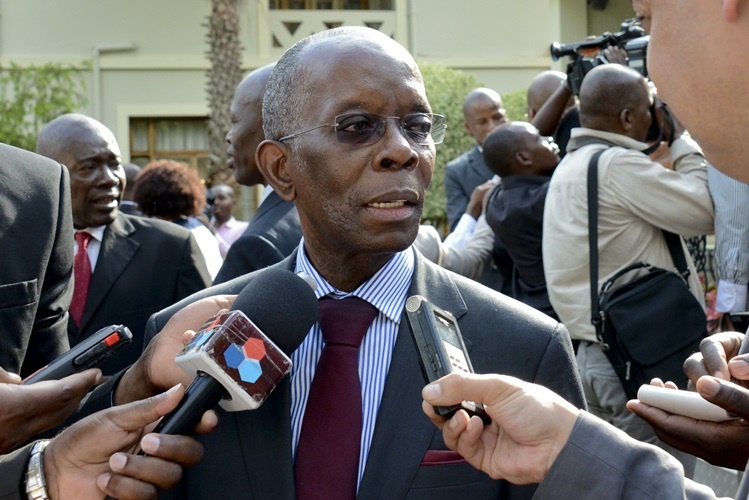Mozambique: Chapo praises central bank for ensuring monetary stability - AIM
Maleiane says IMF debt forecast is pessimistic, Mozambique will not be so indebted

File photo
The Mozambican finance minister told Lusa on Sunday that the International Monetary Fund forecasts on the increase in public debt “are pessimistic”, and that the country will not be so indebted this year.
In an interview with Lusa on the sidelines of the IMF and World Bank Spring Meetings in Washington, Adriano Maleiane said that “IMF projections consider that, since the National Hydrocarbons Company [ENH] needs financing of US$2 billion with state-guarantee to be able to participate in the natural gas project, this counts as increasing indebtedness”.
The Fund’s methodology for the analysis of public accounts means that, as the state guarantee could potentially be activated, the value counts as indebtedness this year even if the guarantee is not triggered, which raises the public debt forecast to 110 and 116 percent in 2018 and 2019.
“As it [ENH] is a public company, they allocate the value as debt, just as they allocate the state guarantees given to two public companies that are now under discussion, but it has no effect on debt, and it rises [in the forecasts] for that reason, but there is no prospect of getting into debt at this level.”
Asked about the overrun on all debt sustainability indicators the IMF uses to assess whether Mozambique is eligible for loans under financial aid programmes, Maleiane admits that the debt-to-GDP ratio is an important indicator but said he attributes more importance to the debt service burden vis-à-vis revenues and exports, as well as to the ratio of the current value of government debt to GDP.
How, then, did one arrive at a situation where the country surpasses all the limits of debt sustainability? For Maleiane, the answer lies in 2016. “In 2015 we had all the indicators within the parameters, but by 2016 the fall in the exchange rate made a lot of difference in the debt in meticais, and pushed all the indicators above the limits.”
The value of the metical against the dollar fell from 44 in 2015 to 81, “and that alone pushed all the indicators over the limits”, he stressed, pointing out that “with the metical recovery in 2017, alone, without doing anything, we already have at least one indicator within the limit, and all others have dropped significantly”.
Even ensuring that the debt does not rise to the 110 percent and 116 percent that the IMF predicts for this and next year, Maleiane says the priority is to maintain reforms so that private agents can get financing to make investments.
“We want the private sector to go to the market at more affordable prices while the state borrows at ‘concessional’ rates through the World Bank or the African Development Bank,” he says, noting that “there is still this capacity taking into account the ratio between the present value of the debt and the GDP” and that “between 2015 and 2019 [international credit institutions] will make US$1.7 billion available to Mozambique [at below-market rates].”












Leave a Reply
Be the First to Comment!
You must be logged in to post a comment.
You must be logged in to post a comment.